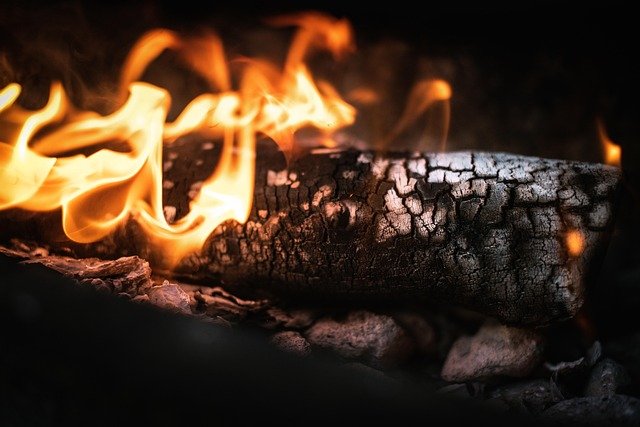Wood Burning Stoves: Efficient Home Heating and Maintenance Guide
Wood burning stoves have been a popular choice for home heating for centuries, offering a combination of warmth, ambiance, and energy efficiency. These traditional heating appliances continue to evolve, incorporating modern technologies to improve performance and reduce environmental impact. This article explores the benefits of wood burning stoves, essential safety considerations, and proper maintenance techniques to ensure optimal performance and longevity.

Why choose a wood burning stove for home heating?
Wood burning stoves offer several advantages as a home heating solution. Firstly, they provide an efficient and cost-effective way to heat your living space, especially if you have access to affordable or free firewood. Modern wood stoves are designed with improved combustion technology, resulting in higher heat output and lower emissions compared to older models.
Another benefit is the independence from electricity or gas supplies. During power outages or emergencies, a wood burning stove can be a reliable source of heat and a means for cooking. Additionally, wood is a renewable resource, making it an environmentally friendly option when sourced responsibly.
The aesthetic appeal of a wood burning stove should not be overlooked. The warm glow and crackling sounds of a fire create a cozy atmosphere that many homeowners find appealing. This ambiance can enhance the overall comfort and enjoyment of your living space.
What safety tips should be followed when using a wood burning stove?
Safety is paramount when operating a wood burning stove. Proper installation by a certified professional is crucial to ensure the stove meets all local building codes and safety standards. This includes appropriate clearances from combustible materials and proper ventilation.
Regular maintenance is essential for safe operation. Have your stove and chimney inspected and cleaned annually by a certified chimney sweep to prevent creosote buildup, which can lead to chimney fires. Install carbon monoxide and smoke detectors in your home and test them regularly.
When using the stove, always follow the manufacturer’s guidelines. Use only dry, seasoned wood to minimize creosote formation and maximize efficiency. Never use flammable liquids to start a fire, and avoid overloading the stove, which can lead to overheating and potential fire hazards.
Keep flammable materials, including furniture and curtains, at a safe distance from the stove. Use a fire-resistant hearth pad and maintain proper clearances as specified by the manufacturer. Always dispose of ashes in a metal container and store them outside, away from combustible materials.
How to maintain and clean a wood burning stove?
Proper maintenance is key to ensuring the longevity and efficiency of your wood burning stove. Regular cleaning is essential to prevent the buildup of creosote and ash, which can reduce heat output and pose safety risks.
Start by allowing the stove to cool completely before cleaning. Remove ash from the firebox regularly, leaving a thin layer (about 1 inch) to help insulate the bottom and improve combustion. Use a metal ash container for disposal and store it outside away from buildings.
Clean the glass door with a specialized stove glass cleaner or a mixture of ash and water. Avoid abrasive materials that could scratch the glass. Inspect the door gasket regularly and replace it if it shows signs of wear to maintain an airtight seal.
Check and clean the flue pipe and chimney at least once a year, or more frequently if you use the stove heavily. Look for signs of damage or wear on the stove’s components, including the baffle plates, firebricks, and air controls. Replace any damaged parts promptly to maintain safe and efficient operation.
Regularly inspect the exterior of the stove for any cracks or damage. Touch up any paint chips with high-temperature stove paint to prevent rusting. Lubricate door hinges and handles as needed to ensure smooth operation.
What are the environmental considerations of using a wood burning stove?
While wood burning stoves can be an environmentally friendly heating option, it’s important to consider their impact on air quality. Modern EPA-certified stoves are designed to burn more efficiently and produce fewer emissions than older models. When purchasing a new stove, look for models that meet or exceed current EPA standards.
To minimize environmental impact, burn only dry, seasoned hardwood. Wet or green wood produces more smoke and particulate matter. Consider the source of your firewood; using locally sourced, sustainably harvested wood reduces transportation emissions and supports responsible forest management.
Proper operation and maintenance of your wood burning stove are crucial for minimizing emissions. Follow the manufacturer’s instructions for optimal air flow settings and avoid smoldering fires, which produce more pollution. Regular cleaning and maintenance ensure your stove operates at peak efficiency, reducing fuel consumption and emissions.
Wood burning stoves continue to be a popular and efficient home heating option. By choosing the right stove, following safety guidelines, and performing regular maintenance, homeowners can enjoy the warmth and ambiance of a wood fire while minimizing environmental impact. As with any heating appliance, it’s essential to consult with professionals for installation and annual inspections to ensure safe and efficient operation throughout the life of your wood burning stove.




